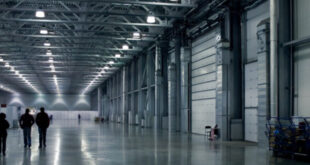The upside is that vacancy is down, absorption is up and lease rates are holding steady. The downside is that any speculative construction, the sign of a truly healthy market, isn’t likely to happen soon.
He may be in the minority, but Jerry Holdner believes the long-struggling Inland Empire office market might be about to turn a corner.
The Inland region’s office vacancy rate at the end of the second quarter was 11.6 percent, down 1.2 percent compared with the second quarter of 2015, said Holdner, research director with Kidder-Matthews Orange County, a commercial real estate firm based in Irvine.
Those are Kidder-Matthews’ numbers, and they more or less correspond to the second quarter vacancy rates of other brokerage houses that cover the Inland region.
Of course, a 1.2 percent decline during the course of 12 months isn’t substantial, and no one is talking about any speculative office construction – or even much build-to-suit – in Riverside or San Bernardino counties anytime soon.
Bottom line: an 11.6 percent vacancy rate is still too high, and it means a lot of empty space will have to be filled before anyone starts building office buildings again.
But Holdner, who is in charge of gathering and interpreting all of Kidder-Matthews’ Inland Empire data, thinks that could change soon, assuming the economy keeps improving and the unemployment rate continues to drop.
He noted that the two-county region absorbed 174,000 square feet of office space during the second quarter of this year, up from 90,000 square feet of negative absorption during April, May and June of 2015, according to Kidder-Matthews.
Average lease rates were essentially unchanged – $1.70 per square foot this year, $1.69 per square foot last year – indicating some stability in the market, although some increase in rates would have been better.
But the biggest reason for optimism regarding the Inland office market is its vacancy rate, Holdner said.
“They’ve gotten below 12 percent vacancy, and my experience is that when a market gets below 12 percent, that’s when good things start to happen,” said Holdner, who held a similar position with Voit Real Estate Services Ontario before moving to Kidder-Matthews. “That’s when you start to see the construction cranes come out and buildings being built.
“I’m not saying that’s definitely going to happen in the Inland Empire soon, but it might,” Holdner added. “Occupancy and absorption are up and vacancy is down, so the numbers are headed in right direction.”
Even if Holdner ends up having been overly optimistic, there are still signs that the Inland Empire office market – which practically hit a wall after the recession hit in 2008 – is in better shape than it was one year ago.
The region’s office market has now posted net occupancy gains in 18 of the last 20 quarters, a period stretching back to the summer of 2011, according to CBRE Group Inc. second quarter report on the Inland office market.
Also, office vacancy fell from 22.8 percent to 14.1 percent during that time, a substantial drop, and the market continues to post “post-recession highs” in all key areas.
In general, Class B space is experiencing stronger activity on the west side, as occupiers continue to look for discounts and space that is close to Los Angeles and Orange counties. That trend is expected to continue in the short-term but go away as the market tightens, CBRE reported.
The submarket around Ontario International Airport continues to drive the Inland office market overall, having posted the largest occupancy gains of any submarket in either county during the second quarter.
Finally, job growth in the Inland Empire is outperforming the national average, and demand for Class A space is staying up, meaning high-end tenants remain interested in locating here, according to CBRE.
The overall picture is of an office market that is improving but still isn’t close to where it was before the recession hit, said John Ewart, senior managing director with Newmark Grubb Knight Frank Ontario.
“It’s hard to put a number on it. but I would say the market is about 20 percent better now than it was a year ago,” Ewart said. “We’re on a positive streak in regards to vacancy and absorption, but it could be better.”
The airport submarket added a little more than 59,000 square feet of occupancy during the second quarter, and San Bernardino added nearly 28,700 square feet, mostly because American Sports University moved into a 21,000-square foot space at 398 W. Fourth St., according to Newmark Grubb Knight Frank.
By comparison, the South County, Riverside and the High Desert posted minor negative net absorption, and vacancy in both counties was 14.3 percent.
For now, the Inland office market will continue to be driven by the Ontario-Rancho Cucamonga submarket, with an emphasis on the area around the airport. Downtown Riverside is still the region’s premiere office market, but it’s mostly built out, Ewart said.
“I expect to see a little more activity on the east side between now and the end of the year, but probably not too much,” Ewart said. “It will help if the housing market keeps improving. So much of housing – title companies, insurance companies, mortgage companies – is tied to the housing industry.”
Larger space – 25,000 square feet and up – will probably stay down for the time being, with most Inland office brokers doing the bulk of their business with properties between 1,200 and 3,500 square feet, Ewart said.
“A lot of time those properties get leased right after people look at them,” Ewart said. “If that part of the market dried up we could all be in trouble.”
Because a lot of brokers are concerned about the upcoming presidential election, the real estate market, and the office market in particular, might slow down during the last half of 2016, said Rick Lazar, senior vice president Coldwell Banker Commercial Sudweeks Group in Redlands.
“A lot of people are waiting to see what kind of fiscal policy they’re going to have to deal with,” Lazar said.”
 IE Business Daily Business news for the Inland Empire.
IE Business Daily Business news for the Inland Empire.


